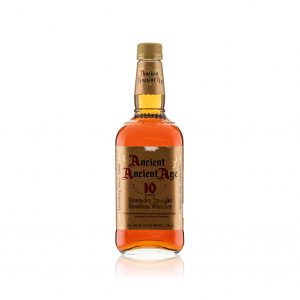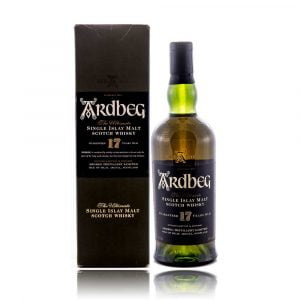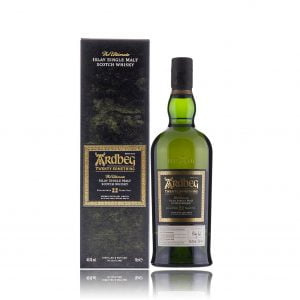Blended Whisky
Blended Scotch whisky is the best-selling of all drams, with the likes of Johnnie Walker, Haig, and Famous Grouse filling drinks cabinets and lining the backs of pubs all over the world. Like all Scotch, blended whisky must be aged in oak casks for at least three years and a day, however, it is much cheaper and more efficient to produce that its single malt or grain contemporaries.
Full-bodied and brimming with complexity, these expressions prove that a dram does not have to originate from the Highlands, Islay, Campbeltown, Speyside, or the Islands to be enjoyed by whisky connoisseurs. Whisky blends are at the heart of the whisky industry, with a multitude of components masterfully combined to create a comprehensive variety of consistent, harmonious blends that continue to gain global popularity.
Read more about these blends and what they offer below, or browse the exclusive range of blended Scotch whiskies The House of Whisky has to offer here.
Browse Scotch
Browse Whiskies
- What is Blended Whisky?
- The Backstory of Blending
- The Rules of Blending Whisky
- What Makes a Good Blended Whisky?
- The Taste of Blended Scotch Whisky
Blended whisky is a mix of several different grain whiskies and malt whiskies from several different distilleries. Grain whiskies are often used to strengthen the flavour and reveal the true depths of the malt whiskies, creating a soft background to show off the rich complexity of the malts. Blended whiskies are less pricey than their single malt counterparts, as they are cheaper to produce with ingredients more readily available.
The art of blending was introduced to the world over a century and a half ago be merchants and shopkeepers. These entrepreneurs were pioneers of blending at a time when changing laws allowed malt and grain whiskies to be combined and meant that these combinations could be sold to the public more readily.
They also had a distinct advantage in the form of previous blending experience and a remarkable history for creating unique combinations in the form of cordials, teas, coffees, wines, and more. This experience gave them the confidence they needed to produce consistent, high-quality whiskies they could put their names behind.
Making an excellent blended Scotch whisky is a highly challenging skill to master. On a basic level, it requires a nose for flavour, palate memory, and intuition. On a more sophisticated level, creating blended whisky required years of experience and comprehensive knowledge of a distillery and its stock, and how this stock will respond to wood and being blended with other malts and grains.
According to Scotch whisky regulations, blended malt Scotch whisky must contain a combination of at least two single malt whiskies distilled at more than one distillery. Similarly, blended grain Scotch whisky refers to a blend of two or more single grain whiskies distilled at more than one distilleries. These regulations also stipulate that blended Scotch whisky must be a blend of at least one single malt Scotch whisky with at least one single grain Scotch whisky. The laws also make allowances for the addition of caramel colour, and for blends of exclusively single malt whisky to be referred to as blended malts.
Consistency is the most crucial element of producing a good blend. Wooden casks are readily influenced by the air and weather around them, making it challenging to create the exact same whisky every time. The master blender has to go through each cask to ensure it is consistent with the last, which is harder for larger brands, as they attempt to meet the global demand for a consistently blended dram.
The master blenders will have a set recipe to ensure their drams are consistent, as well as a keen ability to tell if a cask has properly aged and matured. Often, they will be able to identify the right moment for bottling, as well as if the flavour is right, by tasting the cask. A vat of casks used to make the blend is then created, after which the whisky will either be bottled or married in casks.
While blending whisky started as a way to soften the rugged corners of malts with more intense flavours, it has since evolved into a subtle, highly refined practice. It is a painstaking process where various iterations of malt and grain whiskies complement and cancel out characteristics in each other, creating a consistent result with perfectly balanced complexity.
Most often, blended whiskies have notes of clove, oak, and toffee, with several different house styles emerging to create distinct, memorable expressions that have gained prominence the world over. While major brands such as Grant’s, Chivas Regal, Ballantine’s Cutty Sark, and more developing their whiskies to fit the global market demands, their unique, complex histories are still evident in their offerings. With such a wide range of blended whiskies variety available, there truly is a dram for everyone.
At The House of Whisky, we boast a vast selection of the most exclusive blended whiskies, including:
Browse these whiskies here, and place your order today to taste something truly remarkable.
Showing 1–15 of 462 results
-
Sale!

555
Original price was: £600.00.£550.00Current price is: £550.00. Add to cart -

A Speyside Distillery 2008 12 Year Old Sherry Cask The Whisky Exchange
£350.00 Add to cart -

Aberlour 12 Year Old – Sherry Cask Matured 1L
£150.00 Add to cart -
Sale!

Adelphi Ardnamurchan Top Selection 2015 6yr Old Single Cask Whisky
Original price was: £150.00.£140.00Current price is: £140.00. Add to cart -
Sale!

Allt A Bhainne – 16 Year Old (1979) Cadenhead’s
Original price was: £399.99.£349.99Current price is: £349.99. Read more -

Amrut Double Cask 3rd Edition (2017 Release)
£160.00 Add to cart -

Ancient Ancient Age 10 Star
£99.99 Read more -

Ardbeg 10 Year Old
£45.00 Add to cart -
Sale!

Ardbeg 16 Year Old Single Cask #2787
Original price was: £900.00.£700.00Current price is: £700.00. Add to cart -
Sale!

Ardbeg 17
Original price was: £600.00.£550.00Current price is: £550.00. Add to cart -
Sale!

Ardbeg 19 Year Old Traigh Bhan Batch 3
Original price was: £299.99.£274.99Current price is: £274.99. Add to cart -
Sale!

Ardbeg 22 Year Old – Twenty Something
Original price was: £700.00.£649.99Current price is: £649.99. Add to cart -
Sale!

Ardbeg 23 Year Old – Twenty Something
Original price was: £699.99.£599.99Current price is: £599.99. Add to cart -
Sale!

Ardbeg 8 Year Old For Discussion – Committee Release
Original price was: £155.00.£120.00Current price is: £120.00. Add to cart -
Sale!

Ardbeg Ardcore
Original price was: £225.00.£199.99Current price is: £199.99. Add to cart








